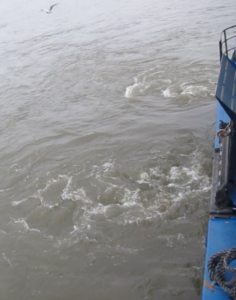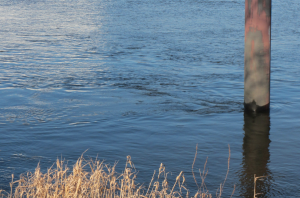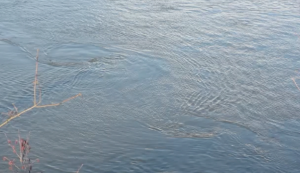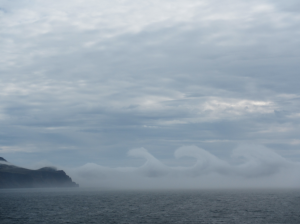Or: fast inflow into nearly stagnant water body
Did you ever notice how when certain ferries dock, they stop, already parallel to the dock, a couple of meters away from the dock and then just move sideways towards the dock? Usually they don’t even move passenger ferries any more, just use thrusters to keep them steady while people get on and off.
But why this weird sideward motion?
One reason is the Coanda effect – the effect that jets are attracted to nearby surfaces and follow those surfaces even when they curve away. You might know it from putting something close to a stream of water and watching how the stream gets pulled towards that object, or from a fast air stream that can lift ping pong balls. So if the ship was moving while using the thrusters, the jets from the thrusters might just attach themselves to the hull of the ship and hence not act perpendicularly to the ship as intended.
But I think there is a secret second reason: Because it just looks awesome :-)



